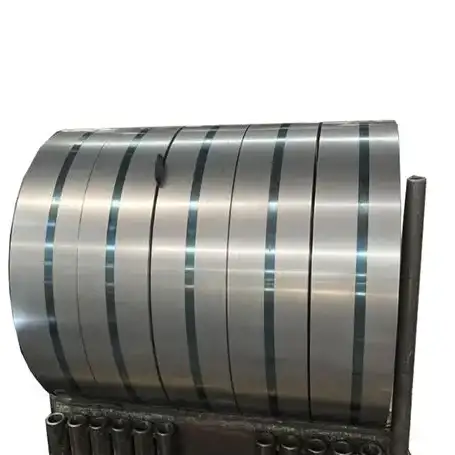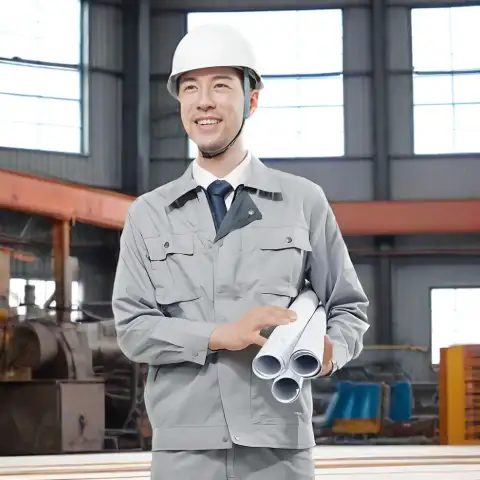If you need the cheapest, easiest-to-manufacture stainless steel for mass-production blades or simple utility tools with very good corrosion resistance and easiest maintenance, 3Cr13 (≈ X30Cr13 / 420B family) is the pragmatic choice; if you want noticeably better edge holding and a small step up in wear resistance while keeping good stainless behavior and still retaining easy sharpening and budget manufacturing, 8Cr13MoV (Chinese AUS-8 analogue) is the better pick. In other words: 3Cr13 trades cutting performance for cost and corrosion safety, while 8Cr13MoV raises hardness and edge life at modest extra cost and slightly more heat-treatment attention.
What the names mean (standards & equivalents)
-
3Cr13 (sometimes written 30Cr13 in older Chinese notation) is a Cr-13 martensitic stainless grade used in China for bars, plate and forgings. It sits in the family commonly mapped to European X30Cr13 (1.4028) and in practice is very close to AISI 420/420B family materials. Typical carbon is around 0.26–0.35% and chromium ~12–14%.
-
8Cr13MoV is a Chinese, knife-industry designation (Cr-series) that contains more carbon (≈0.75–0.85%), chromium around 13%, and small alloying additions of Mo and V (and sometimes tiny Ni). It is widely treated as a budget analogue of AUS-8 or 8A series steels from Japan — the chemistry and practical performance overlap closely. That extra carbon (vs 3Cr13) is the main reason for improved hardness and edge retention.
Side-by-side chemical composition
Here’s a compact table summarizing the commonly reported composition ranges used by mills and knife manufacturers. These are typical nominal values — always ask for a certified mill test report (MTR).
| Element | 3Cr13 (typical range) | 8Cr13MoV (typical range) | Comment |
|---|---|---|---|
| C (Carbon) | 0.26 – 0.35% | 0.70 – 0.85% | Carbon drives hardness & wear resistance. |
| Cr (Chromium) | 12.0 – 14.0% | 12.0 – 14.0% | Both meet stainless threshold; corrosion similar baseline. |
| Mo (Molybdenum) | ≤ 0.2% (often absent) | 0.10 – 0.30% | Mo improves hardenability and pitting resistance in 8Cr13MoV. |
| V (Vanadium) | trace / often none | 0.05 – 0.20% | V forms fine carbides for edge stability in 8Cr13MoV. |
| Mn, Si, P, S | small residuals | small residuals | Manufacturing impurities vary and affect toughness & machinability. |
Key takeaways from composition: the single largest difference is carbon; 8Cr13MoV has roughly double-to-triple the carbon of 3Cr13 which allows it to reach higher hardness and better edge retention after proper quench/temper, while chromium levels leave corrosion resistance in the same general neighborhood.

Microstructure and hardenability
-
3Cr13: lower carbon → smaller martensite fraction at a given HRC. Microstructure after quench/temper is martensitic with relatively fewer carbides; this yields good corrosion resistance and formability, easy polishing, but lower wear resistance and edge life. Typical uses: utilitarian knives, household blades, cutlery in corrosive environments where rust resistance and low cost are priorities.
-
8Cr13MoV: higher carbon + Mo/V produce more martensite and more (and finer) carbide precipitation when heat treated correctly — this raises hardness and edge stability. The Mo and V additions refine the carbides and improve hardenability and wear resistance without heavy losses in corrosion resistance. That is why many budget knives aiming for a “better than 420” edge use this steel.
Heat treatment: recommended cycles & hardness table
Correct quench & temper control makes the practical difference between a mediocre and a good blade from either alloy. Below are typical factory cycles used by knife manufacturers as a starting point; always validate with small test lots and hardness checks.
| Steel | Austenitize (°C) | Quench medium | Temper (°C) | Typical HRC after QT |
|---|---|---|---|---|
| 3Cr13 (X30Cr13/420B) | 950–1000 °C | air or oil (martensite forms readily) | 150–260 °C (single temper) | ~46–54 HRC depending on process; typical target 48–52 HRC. |
| 8Cr13MoV | 1000–1050 °C | oil (or air with controlled atmosphere) | 150–220 °C (two temp passes sometimes) | ~56–60 HRC (factory target often 58–59 HRC to balance toughness and edge holding). |
Notes:
-
Austenitize temperature and time, along with cooling rate in the quench, control final martensite fraction. Higher carbon steels require careful control to avoid cracking.
-
Cryogenic treatments are sometimes used for AUS-8/8Cr13 derivatives to convert retained austenite to martensite and improve edge retention — common in higher-end heat treatments but not necessary for most budget blades.
Mechanical properties comparison
Here’s how the steels behave for knife users and manufacturers.
| Property | 3Cr13 | 8Cr13MoV | Practical implication |
|---|---|---|---|
| Edge retention | Low | Moderate | 8Cr13MoV lasts longer between sharpenings because of higher hardness and carbides. |
| Sharpenability | Very easy | Easy | Both sharpen readily; 3Cr13 is softer and faster to put an edge on. |
| Corrosion resistance | Good (better) | Good | Chromium content is similar; 3Cr13 can have slight edge in corrosion resistance if carbon kept lower. |
| Toughness / chip resistance | Moderate | Moderate to good | Edge chipping is more related to heat treat & geometry than these particular grades; 8Cr13MoV can be slightly less tough at high HRC. |
| Cost & machinability | Lower cost; easier forming | Slightly higher cost; similar machinability | 3Cr13 is very economical for mass production. |
Practical notes: edge geometry (thinness, bevel angle) and heat treatment quality often outweigh small composition differences. A well-treated 3Cr13 with good geometry will outperform a poorly treated 8Cr13MoV.
Real-world behavior: sharpening, maintenance & manufacture
-
Sharpening: 3Cr13 takes a very keen edge with minimal effort; it will dull faster but is forgiving to re-sharpen. 8Cr13MoV requires slightly more effort to hone to the same touch, but holds its edge longer.
-
Maintenance: both are stainless enough for everyday use, but chloride-rich environments (seafood kitchens, boat use) benefit from extra passivation or rinse-dry routines. 3Cr13’s lower carbide population can give a small corrosion advantage in marginal environments.
-
Manufacturing: 3Cr13 is easier to stamp, form and polish at scale; blades and parts can be produced with higher yields and lower reject rates. 8Cr13MoV requires more careful heat treatment control (to avoid over-brittleness) and slightly different grinding parameters because of carbides.
Typical applications and selection advice
Applications:
-
3Cr13: low-cost folding knives, kitchen knives for high-corrosion use, utility blades, cutlery, and anywhere cost + corrosion resistance are prioritized.
-
8Cr13MoV: budget to midrange folding knives, everyday carry (EDC) blades, hunting/utility knives where slightly better edge life matters without premium steel cost.
Procurement: "We need a steel for a general-purpose folding knife sold to restaurants and fishermen."
Engineer (MWalloys): "If corrosion resistance is top priority because of saltwater exposure, 3Cr13 gives you simpler processing, better cost and excellent corrosion safety. If customers value they can go longer without re-sharpening, 8Cr13MoV is worth the modest premium."
Procurement: "Can we heat-treat 8Cr13MoV without blowing up yields?"
MWalloys: "Yes. if the supplier supplies MTRs and you do incoming Rockwell checks. Many OEMs use 8Cr13MoV successfully; process control is the key."
Limitations, quality control and supplier variation
-
“Same name” ≠ identical product. Chinese Cr-series steels are produced across many mills; chemistry tolerances, inclusion control and forging/hot-rolling practices change performance noticeably. Always require MTRs (mill test reports) and sample lots.
-
Heat treat matters more than the name. Two blades of “8Cr13MoV” can differ by several HRC points due to tempering differences. Specify target HRC and process window in purchase orders.
-
Edge design matters. A wrong bevel angle on 8Cr13MoV can lead to chipping if you push HRC too high; conversely an optimized thin geometry on 3Cr13 reduces the practical edge-life gap.
How to spec them in procurement
-
Specify exact grade name, desired chemical tolerances, and require MTR with each lot.
-
Call out heat-treat target HRC (e.g., 3Cr13: 48±2 HRC; 8Cr13MoV: 58±1 HRC) and test method (ASTM E18 or equivalent).
-
Require surface condition / finish and straightness tolerances for blades.
-
Ask for sample heat-treat certificates and a small lot pilot before full production.
-
Include passivation / corrosion testing if end use is food or marine.
Test methods & authority
-
Chinese national standard series GB/T 1220 (stainless steel bars) is the context where Cr-series names are used; mapping to EN / DIN and AISI helps cross-reference.
-
EN/DIN material datasheets for X30Cr13 / 1.4028 provide authoritative heat treat & mechanical guidance for 3Cr13 family steels.
-
Knife-industry metallurgists and test labs publish real-world assessments for 8Cr13MoV (AUS-8 analogue) which are helpful for realistic expectations.
Manufacturer & mill QA considerations
-
Ask suppliers for: (a) certified composition (MTR), (b) hardness test records, (c) evidence of decarb control (for thin blades), (d) sample micrograph or 3rd-party lab analysis for critical projects. Supplier audits or third-party lab verifications pay off on high-volume programs.
Comparison summary (engineer’s quick reference):
| Use case | Best bet |
|---|---|
| Food service, salt environment, lowest cost | 3Cr13 (good corrosion, low cost) |
| Mass-market EDC with better edge life | 8Cr13MoV (better wear & edge retention) |
| High-end kitchen / long edge retention | Move to higher carbon stainless (e.g., VG-10, 154CM, S30V) — beyond scope here. |
FAQs
-
Is 3Cr13 stainless?
Yes, chromium ~12–14% places it in the stainless family; it is martensitic stainless with good corrosion resistance for everyday use. -
Is 8Cr13MoV the same as AUS-8?
Functionally they are very close; many manufacturers treat 8Cr13MoV as a Chinese analogue of AUS-8 (composition and behavior overlap). -
Which resists rust better?
Both have similar chromium; 3Cr13’s lower carbon can offer a small corrosion advantage in marginal conditions — but finish and maintenance matter more. -
Which is harder after heat treat?
8Cr13MoV typically reaches ~58–59 HRC; 3Cr13 more commonly sits in the high-40s to low-50s HRC. -
Can I use 3Cr13 for kitchen chef knives?
For low-cost, corrosion-safe kitchen blades yes; professional chefs often prefer steels with higher edge retention. -
Are these steels hard to sharpen?
Neither is difficult — 3Cr13 is easier; 8Cr13MoV requires slightly more time but holds edge longer. -
Any special heat-treat precautions?
Yes: control austenitize temperature and quench to avoid distortion/cracking; request test bars from supplier. -
Will 8Cr13MoV chip easily?
Not if heat treated and tempered properly; chipping risk rises if you over-harden for thin edges. Geometry matters. -
Which is cheaper?
3Cr13 typically costs less per kg and is cheaper to process in volume. -
What to ask my supplier for?
MTR, heat-treat record, hardness checks, and a small pilot lot for QC verification.
Final practical recommendation
If your product is volume-priced, needs easy production, and you want maximum corrosion safety at minimum cost — 3Cr13 is a rational default. If edge retention and perceived “performance” (sharper for longer) matter to buyers and you accept a small premium and more controlled heat treatment — 8Cr13MoV is the stronger candidate. For designs that push into demanding edge retention, consider moving up the alloy ladder (higher carbon stainless or powdered metallurgy steels) rather than expecting miracles from Cr-series steels.

